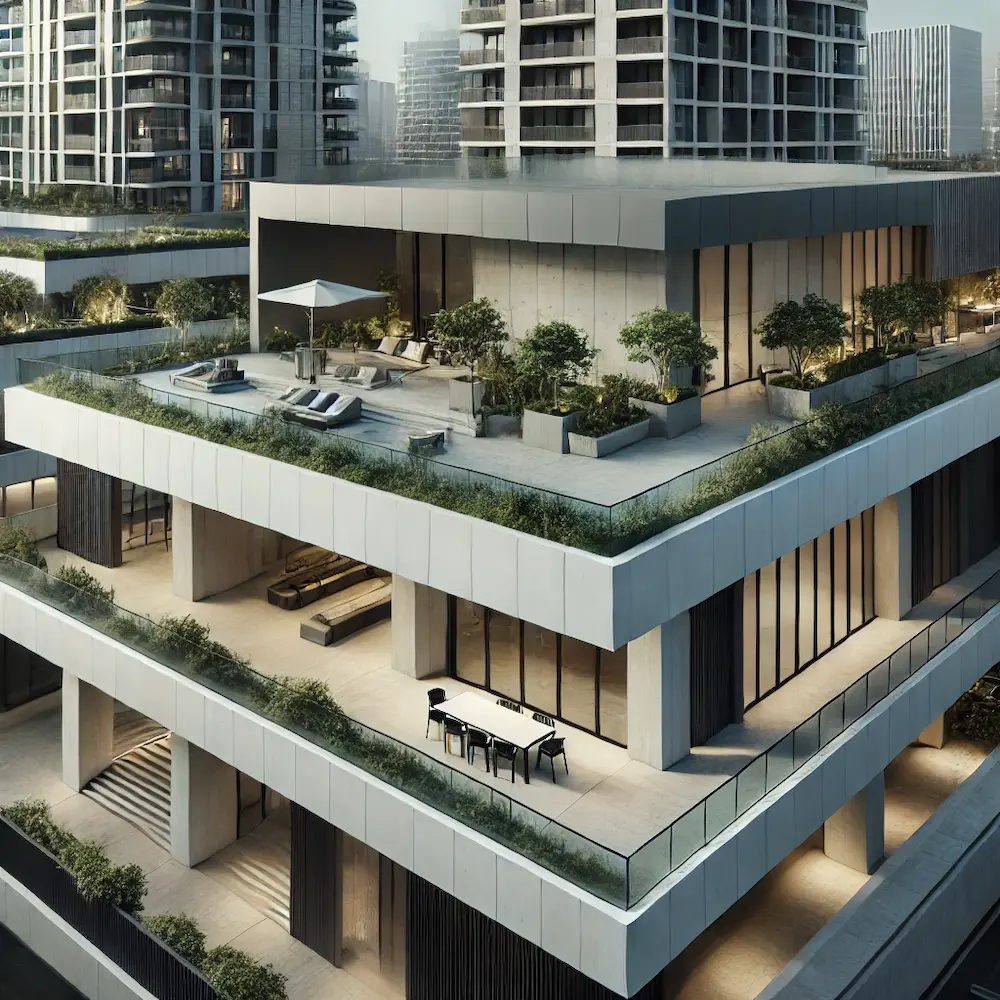A flat roof is a horizontal or nearly horizontal roof design, typically featuring a slight pitch of up to 10 degrees to facilitate water drainage. This design is prevalent in arid climates and modern architecture, offering a sleek, minimalist aesthetic and practical space utilization.
History and Origins of Flat Roofs
Flat roofs have ancient origins, prominently featured in Egyptian, Persian, and Arabian architecture. Their design was well-suited to arid climates, providing usable rooftop spaces for various activities. In modern times, flat roofs became integral to the International Style of architecture in the early 20th century, emphasizing functional design and minimalism.
Key Features of Flat Roofs
- Minimal Slope: Flat roofs are designed with a slight pitch, typically between 1 to 10 degrees, to ensure proper water drainage and prevent ponding.
- Versatility: They offer adaptable space for various applications, such as rooftop gardens, solar panel installations, or recreational areas.
- Construction Materials: Common materials include Built-Up Roof (BUR) systems, modified bitumen, EPDM rubber, PVC, and TPO membranes, each offering distinct advantages in terms of durability, cost, and maintenance.
Applications of Flat Roofs
- Commercial Buildings: Flat roofs are prevalent in malls, warehouses, and schools due to their cost-effectiveness and ease of installation over large areas.
- Residential Structures: They are common in modern and minimalist home designs, providing additional outdoor living spaces or accommodating green roofs.
- Industrial Facilities: Flat roofs facilitate the installation of large HVAC systems and other equipment, making them suitable for industrial applications.
Considerations When Choosing a Flat Roof
- Climate Suitability: Flat roofs are ideal for arid regions but require proper drainage solutions in areas with heavy rainfall or snowfall to prevent water accumulation.
- Maintenance: Regular inspections and maintenance are essential to address potential issues such as leaks, membrane punctures, or drainage blockages.
- Durability and Lifespan: The longevity of a flat roof depends on the materials used and the quality of installation, with some systems lasting over 25 years with proper care.
- Insulation and Energy Efficiency: Incorporating adequate insulation and reflective materials can enhance energy efficiency, reducing heating and cooling costs.
Conclusion
Flat roofs offer a blend of aesthetic appeal and functional space utilization, making them a popular choice in various architectural contexts. When considering a flat roof, it’s crucial to evaluate factors such as climate suitability, maintenance requirements, and material selection to ensure durability and performance. Consulting with experienced roofing professionals can provide tailored solutions to meet specific building needs.
